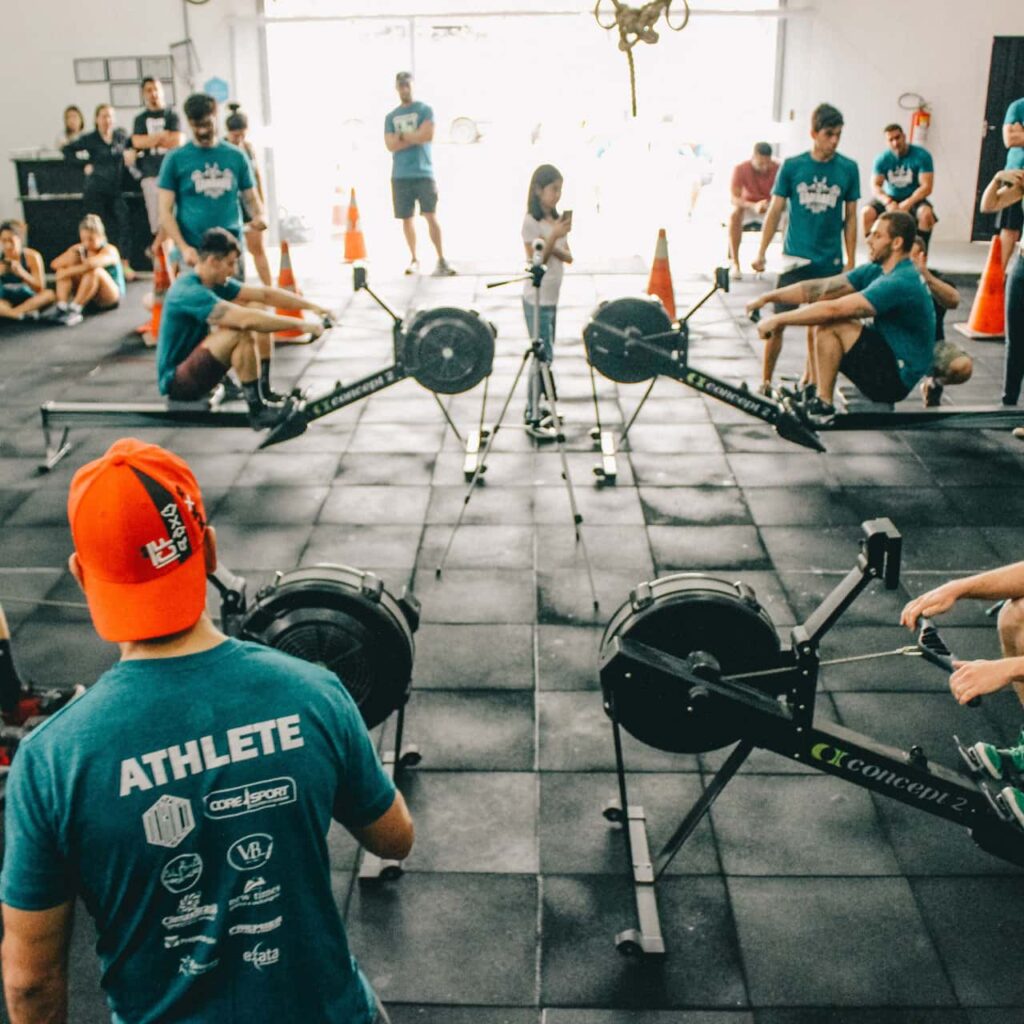
It is not unknown that the majority of athletes usually follow specific diet patterns or that they have tried different nutrition patterns along their athletic career. Sustainable nutrition becomes more and more popular and more people try to follow patterns which are beneficial for their health, their performance and for the environment. Is there though a way that they can follow a win-win-win solution, where they can meet the required dietary needs (for both health and performance), and at the same time do not compromise the planet’s health (1)? How can an athlete find this balance?
Let’s see below, what the research says about sustainable eating and the athletic population.
The athlete’s plate (AP)
The AP, was created in order to help the athletes and the sports dietitians to adjust food consumption, based on the athlete’s training volume and intensity (1). It is important to remember that every food has a different Environmental Impact (EI) and that red meat and dairy products have higher Greenhouse Emissions (GE), higher water requirements and land use when compared to the plant-based proteins (2). Moreover, keep in mind that everything being produced and consumed, affects the environment (1).
As showed Reguant-Closa et al.(1), the AP was analysed and was separated in 3 categories: the easy training, the moderate training and the hard training. The results showed that there was a main effect between training and meals for most of the categories and that lunch, dinner and the hard training plate had a higher EI. Moreover, the study showed that by reducing the total amount of protein on the plates, and especially the animal protein sources, and by adding plant-based meals, will help in lowering the EI. Additionally, the same study (1) resulted in the fact that there is a need for education among registered dietitians and nutritionists, in order to decrease the EI of the AP and at the same time maintain a balanced and adequate diet for the athletes in order for them to improve performance and maintain health.

Let’s see now, more specifically which are the benefits for the athletes, when following a sustainable nutrition plan…
A sustainable nutrition pattern, may:
1. Boost performance and recovery.
It seems that by replacing some of the animal proteins and by following a more flexitarian diet (known as a diet close to the Mediterranean type of diet, which encourages the reduced consumption of meat), can lead to sports performance opportunities (3). More specifically, by adding fruits, vegetables, whole grains and pulses into the athlete’s diet, it seems to boost antioxidant, vasodilatory and anti-inflammatory properties. Research has been done, by using veggies such as beetroot and garlic (4, 5). All these properties can further improve endurance performance, recovery and blood flow, while reducing oxidative stress and muscle damage (4, 5).

2. Boost health, protect the environment and reduce the carbon dioxide production.
A flexitarian type of nutrition plan, seem to be beneficial for both health and the environment. Current diets are higher in processed sugars, oils, fats and meats and if these diet trends are not taken seriously, they will lead to 80% increase in global agricultural GE (6). These types of diets, increase the possibility of developing chronic diseases, such as heart disease, diabetes disease and other non-communicable diseases (6). A flexitarian or vegetarian type of diet, can offer health benefits and reduce the possibilities of developing the previous mentioned diseases, while they can help in reducing global agricultural greenhouse gas emissions, land clearing and resultant animal extinctions (6).


3. Give mental clarity and better concentration levels.
A diet which contains fish, nuts and seeds e.g. a flexitarian or vegetarian or vegan type of diet will contain more Omega 3 fatty acids. Omega 3s (7) can support cognitive and brain health, thus they may boost focus and concentration levels. Good focus and concentration are massively required during training and competition.
Despite this, it is good to know that a flexitarian type of diet which contains fish, seems to be more appropriate for the athletes as the EPA and DHA found in fish (and some specific species of algae) are more biologically active (8). Nuts and seeds such as flaxseeds and chia seeds do not have these biologically active n-3 PUFAs (8). EPA and DHA are required, as they have overall positive and neuroprotective effects, such as reducing inflammation and fatigue, improving cognitive function, mood and resistant training, sustaining muscle mass post injury, reducing soreness and improving training adaptation (7).

To sum up, the truth is that more and more athletes have started moving to a flexitarian, vegetarian or vegan type of diet and that sports nutrition companies have started to give more related food options (9). The Food and Agriculture Organization (FAO) and the World Health Organization (WHO) have well-defined the sustainable and healthy diets, and this is no longer something fake (9). Additionally, FAO and WHO have defined that sustainable healthy diets are easily accessible, safe, affordable and culturally acceptable diet patterns which can cover the health and wellbeing of every individual who follows them, while at the same time have lower environmental impact (9).
Despite all these, more research is required to further investigate which types of sustainable nutrition plans will be more beneficial for both the athletes and the planet and which promote win-win-win solutions (3). Research on food waste, packaging reduction and effective educational tools is also required (3).
This article was written by the founder of amvnutrition.com, Anna-Maria, who is a registered sports nutritionist (practitioner registrant, SENr, BDA, INDI) and a sports scientist (EIMGreece). Anna-Maria has worked with a variety of different athletes and active individuals, she is an excellent communicator and she always finds appropriate and comforting ways to helps each individual she works with. You can see more of Anna-Maria’s background here.
References
- Reguant-Closa, A., Roesch, A., Lansche, J., Nemecek, T., Lohman, T. G., Meyer, N. L. (2020). The Environmental Impact of the Athlete’s Plate Nutrition Education Tool. Nutrients, 12(8):2484. doi: 10.3390/nu12082484. PMID: 32824745; PMCID: PMC7468909.
- Poore, J., Nemecek, T. (2018). Reducing food’s environmental impacts through producers and consumers. Science, 360(6392):987-992. doi: 10.1126/science.aaq0216. Erratum in: Science. 2019 Feb 22;363(6429): PMID: 29853680.
- Meyer. N. L., Reguant-Closa, A., Nemecek, T., (2020). Sustainable Diets for Athletes. Curr Nutr, 9(3):147-162. doi: 10.1007/s13668-020-00318-0. PMID: 32504413.
- Domínguez, R., Cuenca, E., Maté-Muñoz, J. L., García-Fernández, P., Serra-Paya, N., Estevan, M. C., Herreros, P. V., Garnacho-Castaño, M. V. (2017). Effects of Beetroot Juice Supplementation on Cardiorespiratory Endurance in Athletes. A Systematic Review. Nutrients, 9(1):43. doi: 10.3390/nu9010043. PMID: 28067808; PMCID: PMC5295087.
- Ince, D., Sönmez, G., Ince, M., (1999). Effects of garlic on aerobic performance. Turk L Med Sci, 30:557–61.
- Tilman, D., Clark, M., (2014). Global diets link environmental sustainability and human health. Nature, 515(7528):518–22. https://doi. org/10.1038/nature13959.
- Tomczyk, M., Heileson, J. L., Babiarz, M., Calder, P. C. (2023). Athletes Can Benefit from Increased Intake of EPA and DHA-Evaluating the Evidence. Nutrients, 15(23):4925. doi: 10.3390/nu15234925. PMID: 38068783; PMCID: PMC10708277.
- Calder, P. C. (2018). Very long-chain n-3 fatty acids and human health: fact, fiction and the future. Proc Nutr Soc, 77(1):52-72. doi: 10.1017/S0029665117003950. Epub 2017 Oct 17. PMID: 29039280.
- Ria Vanderstraeten, (2022). Sustainable Nutrition and Sport. Nutrition and Dietetics. Komp Nutr Diet, 2(2):75-77. doi: 10.1159/000526954.
Anna-Maria Volanaki






